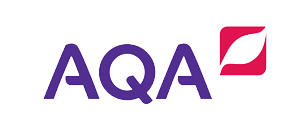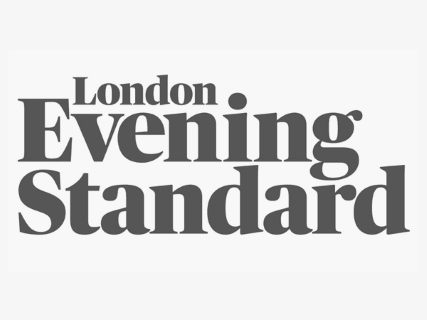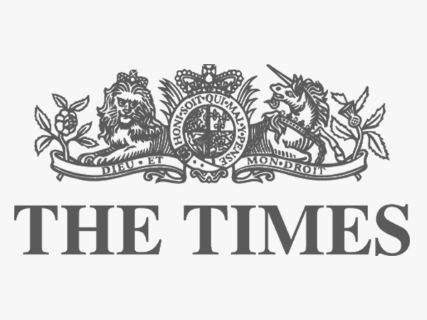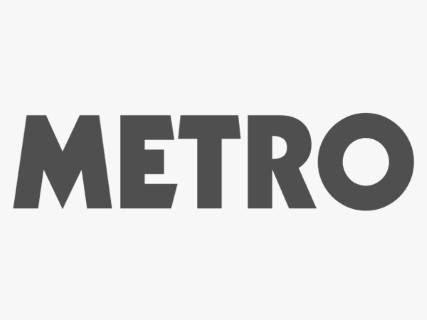IMPROVE YOUR A LEVEL GRADES
Up Learn A Level Economics
The Up Learn Economics course contains everything you need to learn and achieve top grades in A Level Economics.
Exam Boards: AQA, Edexcel
No payment info required.
WHAT YOU GET
Every course includes
Interactive Video Lessons
Video content that keeps you engaged and regular activities that keep you from losing focus
Detailed Quizzes
800+ questions designed to test your understanding, with a mix of exam-style mark schemes and full written answers that address common misconceptions
Exclusive Practice Papers
Reviewed by real examiners exclusively for Up Learn in order to give you additional confidence when preparing for exams
Progress Tracker to A*
Bespoke assessment and practice questions to chart your grade gains as you progress
Our exam boards

AS (Year 12)
3.1. The Operation of Markets and Market Failure (Microeconomics)
3.1.1.2. The Nature and Purpose of Economic Activity
3.1.1.3. Economic Resources
3.1.1.4. Scarcity, Choice and the Allocation of Resources
3.1.1.5. Production Possibility Diagrams
3.1.2.2. Price, Income and Cross Elasticities of Demand
3.1.2.3. The Determinants of the Supply of Goods and Services
3.1.2.4. Price Elasticity of Supply
3.1.2.5. The Determination of Equilibrium Market Prices
3.1.2.6. The Interrelationship Between Markets
3.1.3.2. Specialisation, Division of Labour and Exchange
3.1.3.3. Costs of Production
3.1.3.4. Economies and Diseconomies of Scale
3.1.3.5. Average Revenue, Total Revenue and Profit
3.1.4.2. The Objectives of Firms
3.1.4.3. Competitive Markets
3.1.4.4. Monopoly and Monopoly Power
3.1.4.5. The Competitive Market Process
3.1.5.2. The Meaning of Market Failure
3.1.5.3. Public Goods, Private Goods and Quasi-Public Goods
3.1.5.4. Positive and Negative Externalities in Consumption and Production
3.1.5.5. Merit and Demerit Goods
3.1.5.6. Market Imperfections
3.1.5.7. An Inequitable Distribution of Income and Wealth
3.1.5.8. Government Intervention in Markets
3.1.5.9. Government Failure
3.2. The National Economy in a Global Context (Macroeconomics)
3.2.1.2. Macroeconomic Indicators
3.2.1.3. Uses of Index Numbers
3.2.2.2. Aggregate Demand and Aggregate Supply Analysis
3.2.2.3. The Determinants of Aggregate Demand
3.2.2.4. Aggregate Demand and the Level of Economic Activity
3.2.2.5. Determinants of Short-Run Aggregate Supply
3.2.2.6. Determinants of Long-Run Aggregate Supply
3.2.3.2. Employment and Unemployment
3.2.3.3. Inflation and Deflation
3.2.3.4. The Balance of Payments on Current Account
3.2.3.5. Possible Conflicts Between Macroeconomic Policy Objectives
3.2.4.2. Fiscal Policy
3.2.4.3. Supply-Side Policies

A Level (Year 12-13)
4.1. Individuals, Firms, Markets and Market Failure (Microeconomics)
4.1.1.2. The Nature and Purpose of Economic Activity
4.1.1.3. Economic Resources
4.1.1.4. Scarcity, Choice and the Allocation of Resources
4.1.1.5. Production Possibility Diagrams
4.1.2.2. Imperfect Information
4.1.2.3. Aspects of Behavioural Economic Theory
4.1.2.4. Behavioural Economics and Economic Policy
4.1.3.2. Price, Income and Cross Elasticities of Demand
4.1.3.3. The Determinants of the Supply of Goods and Services
4.1.3.4. Price Elasticity of Supply
4.1.3.5. The Determination of Equilibrium Market Prices
4.1.3.6. The Interrelationship Between Markets
4.1.4.2. Specialisation, Division of Labour and Exchange
4.1.4.3. The Law of Diminishing Returns and Returns to Scale
4.1.4.4. Costs of Production
4.1.4.5. Economies and Diseconomies of Scale
4.1.4.6. Marginal, Average and Total Revenue
4.1.4.7. Profit
4.1.4.8. Technological Change
4.1.5.2. The Objectives of Firms
4.1.5.3. Perfect Competition
4.1.5.4. Monopolistic Competition
4.1.5.5. Oligopoly
4.1.5.6. Monopoly and Monopoly Power
4.1.5.7. Price Discrimination
4.1.5.8. The Dynamics of Competition and Competitive Market Processes
4.1.5.9. Contestable and Non-Contestable Markets
4.1.5.10. Market Structure, Static Efficiency, Dynamic Efficiency and Resource Allocation
4.1.5.11. Consumer and Producer Surplus
4.1.6.2. Influences Upon the Supply of Labour to Different Markets
4.1.6.3. The Determination of Relative Wage Rates and Levels of Employment in Perfectly Competitive Labour Markets
4.1.6.4. The Determination of Relative Wage Rates and Levels of Employment in Imperfectly Competitive Labour Markets
4.1.6.5. The Influence of Trade Unions in Determining Wages and Levels of Employment
4.1.6.6. The National Minimum Wage
4.1.6.7. Discrimination in the Labour Market
4.1.7.2. The Problem of Poverty
4.1.7.3. Government Policies to Alleviate Poverty and to Influence the Distribution of Income and Wealth
4.1.8.2. The Meaning of Market Failure
4.1.8.3. Public Goods, Private Goods and Quasi-Public Goods
4.1.8.4. Positive and Negative Externalities in Consumption and Production
4.1.8.5. Merit and Demerit Goods
4.1.8.6. Market Imperfections
4.1.8.7. Competition Policy
4.1.8.8. Public Ownership, Privatisation, Regulation and Deregulation of Markets
4.1.8.9. Government Intervention in Markets
4.1.8.10. Government Failure
4.2. The National and International Economy (Macroeconomics)
4.2.1.2. Macroeconomic Indicators
4.2.1.3. Uses of Index Numbers
4.2.1.4. Uses of National Income Data
4.2.2.2. Aggregate Demand and Aggregate Supply Analysis
4.2.2.3. The Determinants of Aggregate Demand
4.2.2.4. Aggregate Demand and the Level of Economic Activity
4.2.2.5. Determinants of Short-Run Aggregate Supply
4.2.2.6. Determinants of Long-Run Aggregate Supply
4.2.3.2. Employment and Unemployment
4.2.3.3. Inflation and Deflation
4.2.3.4. Possible Conflicts Between Macroeconomic Policy Objectives
4.2.4.2. Commercial Banks and Investment Banks
4.2.4.3. Central Banks and Monetary Policy
4.2.4.4. The Regulation of the Financial System
4.2.5.2. Supply-Side Policies
4.2.6.2. Trade
4.2.6.3. The Balance of Payments
4.2.6.4. Exchange Rate Systems
4.2.6.5. Economic Growth and Development

AS (Year 12)
1.1.1. Economics as a Social Science
1.1.2. Positive and Normative Economic Statements
1.1.3. The Economic Problem
1.1.4. Production Possibility Frontiers
1.1.5. Specialisation and the Division of Labour
1.1.6. Free Market Economies, Mixed Economy and Command Economy
1.2. How Markets Work
1.2.1. Rational Decision Making
1.2.2. Demand
1.2.3. Price, Income and Cross-Elasticities of Demand
1.2.4. Supply
1.2.5. Elasticity of Supply
1.2.6. Price Determination
1.2.7. Price Mechanism
1.2.8. Consumer and Producer Surplus
1.2.9. Indirect Taxes and Subsidies
1.2.10. Alternative Views of Consumer Behaviour
1.3. Market Failure
1.3.1. Types of Market Failure
1.3.2. Externalities
1.3.3. Public Goods
1.3.4. Information Gaps
1.4. Government Intervention
1.4.1. Government Intervention in Markets
1.4.2. Government Failure
2.1.1. Economic Growth
2.1.2. Inflation
2.1.3. Employment and Unemployment
2.1.4. Balance of Payments
2.2. Aggregate Demand (AD)
2.2.1. The Characteristics of AD
2.2.2. Consumption (C)
2.2.3. Investment (I)
2.2.4. Government Expenditure (G)
2.2.5. Net Trade (X-M)
2.3. Aggregate Supply (AS)
2.3.1. The Characteristics of AS
2.3.2. Short-Run AS
2.3.3. Long-Run AS
2.4. National Income
2.4.1. National Income
2.4.2. Injections and Withdrawals
2.4.3. Equilibrium Levels of Real National Output
2.4.4. The Multiplier
2.5. Economic Growth
2.5.1. Causes of Growth
2.5.2. Output Gaps
2.5.3. Trade (business) Cycle
2.5.4. The Impact of Economic Growth
2.6. Macroeconomic Objectives and Policies
2.6.1. Possible Macroeconomic Objectives
2.6.2. Demand-Side Policies
2.6.3. Supply-Side Policies
2.6.4. Conflicts and Trade-Offs between Objectives and Policies

A Level (Year 12-13)
1.1.1. Economics as a Social Science
1.1.2. Positive and Normative Economic Statements
1.1.3. The Economic Problem
1.1.4. Production Possibility Frontiers
1.1.5. Specialisation and the Division of Labour
1.1.6. Free Market Economies, Mixed Economy and Command Economy
1.2. How Markets Work
1.2.1. Rational Decision Making
1.2.2. Demand
1.2.3. Price, Income and Cross-Elasticities of Demand
1.2.4. Supply
1.2.5. Elasticity of Supply
1.2.6. Price Determination
1.2.7. Price Mechanism
1.2.8. Consumer and Producer Surplus
1.2.9. Indirect Taxes and Subsidies
1.2.10. Alternative Views of Consumer Behaviour
1.3. Market Failure
1.3.1. Types of Market Failure
1.3.2. Externalities
1.3.3. Public Goods
1.3.4. Information Gaps
1.4. Government Intervention
1.4.1. Government Intervention in Markets
1.4.2. Government Failure
2.1.1. Economic Growth
2.1.2. Inflation
2.1.3. Employment and Unemployment
2.1.4. Balance of Payments
2.2. Aggregate Demand (AD)
2.2.1. The Characteristics of AD
2.2.2. Consumption (C)
2.2.3. Investment (I)
2.2.4. Government Expenditure (G)
2.2.5. Net Trade (X-M)
2.3. Aggregate Supply (AS)
2.3.1. The Characteristics of AS
2.3.2. Short-Run AS
2.3.3. Long-Run AS
2.4. National Income
2.4.1. National Income
2.4.2. Injections and Withdrawals
2.4.3. Equilibrium Levels of Real National Output
2.4.4. The Multiplier
2.5. Economic Growth
2.5.1. Causes of Growth
2.5.2. Output Gaps
2.5.3. Trade (business) Cycle
2.5.4. The Impact of Economic Growth
2.6. Macroeconomic Objectives and Policies
2.6.1. Possible Macroeconomic Objectives
2.6.2. Demand-Side Policies
2.6.3. Supply-Side Policies
2.6.4. Conflicts and Trade-Offs between Objectives and Policies
3.1.1. Sizes and Types of Firms
3.1.2. Business Growth
3.1.3. Demergers
3.2. Business Objectives
3.2.1. Business Objectives
3.3. Revenues, Costs and Profits
3.3.1. Revenue
3.3.2. Costs
3.3.3. Economies and Diseconomies of Scale
3.3.4. Normal Profits, Supernormal Profits and Losses
3.4. Market Structures
3.4.1. Efficiency
3.4.2. Perfect Competition
3.4.3. Monopolistic Competition
3.4.4. Oligopoly
3.4.5. Monopoly
3.5.6. Monopsony
3.5.7. Contestability
3.5. Labour Market
3.5.1. Demand for Labour
3.5.2. Supply of Labour
3.5.3. Wage Determination in Competitive and Non-Competitive Markets
3.6. Government Intervention
3.6.1. Government Intervention
3.6.2. The Impact of Government Intervention
4.1.1. Globalisation
4.1.2. Specialisation and Trade
4.1.3. Pattern of Trade
4.1.4. Terms of Trade
4.1.5. Trading Blocs and the World Trade Organisation (WTO)
4.1.6. Restrictions on Free Trade
4.1.7. Balance of Payments
4.1.8. Exchange Rates
4.1.9. International Competitiveness
4.2. Poverty and Inequality
4.2.1. Absolute and Relative Poverty
4.2.2. Inequality
4.3. Emerging and Developing Economies
4.3.1. Measures of Development
4.3.2. Factors Influencing Growth and Development
4.3.3. Strategies Influencing Growth and Development
4.4. The Financial Sector
4.4.1. Role of Financial Markets
4.4.2. Market Failure in the Financial Sector
4.4.3. Role of Central Banks
4.5. Role of the State in the Macroeconomy
4.5.1. Public Expenditure
4.5.2. Taxation
4.5.3. Public Sector Finances
4.5.4. Macroeconomic Policies in a Global Context
WHAT STUDENTS HAVE SAID
Our student stories
Up Learn alumni can be found at top universities (Oxford, Cambridge, LSE, Imperial). Many students achieve far better grades than they believed they could, and some have even taken gap years and applied to a higher-ranked set of universities





